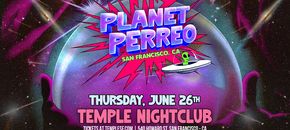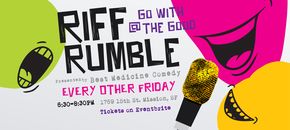The Bay’s Curiosity in 3,900 Questions and Counting

There’s a limit to the questions Siri and Alexa can answer for you. You might get a few hits on a subject, but it’s not in their wheelhouse to explain how stories have changed over time.
Who invented the martini? Is there a San Francisco accent? Is the Castro getting less gay?
You could easily spend hours rifling through the pages of the internet to find a solid answer. If humans were somehow less questioning, perhaps Bay Curious might never have existed.
Over the past four years, Olivia Allen-Price has been hosting a KQED podcast that brings informational peace to so many of its listeners.
Each episode tackles a new frontier, bringing together history experts and science junkies to pore over the mysteries that make the Bay Area such an exciting place to wind up in.
 Olivia Allen-Price in studio. (Adam Grossberg/KQED)
Olivia Allen-Price in studio. (Adam Grossberg/KQED)“I hear from a ton of people who are like, ‘I’ve lived here for 20 years, and some of the stuff i knew, but you always tell me something different,'” said Allen-Price.
You can listen to an episode in the time it takes you to brew your coffee (under 15 minutes, hopefully). If you get through them all in a day or two, there’s still 3,900 unanswered questions waiting in the backlog.
Bay Curious is like a tribute to curiosity itself. If you’ve ever stopped on the street to admire a local landmark, or looked up at a sign with a strange inclination to know its origin, you’re in good company.
“It’s almost sort of a joke in the newsroom right now,” said Allen-Price. “Someone asks a question out loud at a meeting that no one can answer and people will be like, ‘Bay Curious!'”
Over two million Bay Area residents tune into KQED’s multiple platforms each week. The questions they pose can sometimes be unusual, but are most often a revisit to some back story that’s been quietly neglected.
Curiosity in the Works
Some questions make for an interesting story, but they don’t always show up in a timely news cycle. That’s part of how the idea for Bay Curious began to take shape.
Before playing host, Allen-Price had looked for ways to build participation with KQED listeners as an digital Engagement Producer.
“I was always hunting around for ways we could have a deeper level of talking to and from the audience, really making it feel more like a community and less like we’re kind this behemoth media organization,” said Allen-Price.
 Bay Curious Trivia Night in SF, Host Olivia Allen-Price (Geraldine Montes/KQED)
Bay Curious Trivia Night in SF, Host Olivia Allen-Price (Geraldine Montes/KQED)Sometime around 2016, KQED caught wind of a program called Curious City on WBEZ in Chicago that explored local relics and hidden landmarks across the city. Its founder, Jennifer Brandel, had seen the show gain wild popularity among its Midwest audience.
After meeting with Brandel at KQED in San Francisco, the West Coast news team knew this was what they had been searching for. After Allen-Price left the meeting, she tested the waters with an initial e-blast promoting Bay Curious to subscribers.
She awoke the next morning to at least 400 unread emails in the inbox.
“I was like, maybe we’ll get a couple dozen if we’re lucky,” said Allen-Price. “Right away we were like, oh, this is something that people are at least interested in. Even though we haven’t proven who we are, and what were doing yet, they’re already pretty excited about the idea.”
In its first year, Bay Curious generated at least 10 to 20 times the number of reads the average KQED news story was getting. It was delivering content listeners had been longing for—with those same listeners helping to create it.
Since then, the podcast has grown to include digital stories, as well as short videos to watch online.
Return to Oral History
Part of the podcast’s popularity is rooted in our search for answers. Within murky history debates and theories that might only be explained by science, the facts aren’t always clear cut.
“When it comes to history, there’s disagreements to how things unfolded throughout history,” said Allen-Price. “If someone doesn’t write it down, chronicle it, and make something of it, that all gets lost over time.”
It’s a little bit like building a local encyclopedia that can be accessed across generations.
“I think we are definitely in a sort of uniquely rich place for stories,” she said. “We’re a Boomtown. We started with the Gold Rush, we had the dot-coms, and we have what’s going on now.”
 Reporter Katrina Schwartz (left) and Bay Curious Host Olivia Allen-Price (Photo courtesy of Daniel Scondo)
Reporter Katrina Schwartz (left) and Bay Curious Host Olivia Allen-Price (Photo courtesy of Daniel Scondo)The team at KQED does its best to balance information by geography, pulling featured stories equally from all nine counties of the Bay Area.
“In a place like the Bay Area where you have a lot of young, new people coming in all the time, it becomes really easy to lose these stories and lose any kind of community knowledge around where we live,” said Allen-Price. “I see this as an effort to build community through some shared stories about ourselves.”
Lately, we live in a world where visuals are everything. Allen-Price supports that notion with how much time she spends on Instagram before getting out of bed in the morning.
“It is oral history. It’s the stories that grandfathers told on their stoops to their granddaughters,”she said. “It hasn’t changed a lot, we just deliver it digitally.”
Moving People Forward
Bay Curious seeks to reconnect podcast followers to the past but it’s also a landing place to separate theory from myth. As a self-described “science nerd,” Allen-Price finds plenty of opportunities to geek out on the natural world.
One recent episode tracked down tsunami scientists to find out whether San Andreas, the 2015 disaster film that left the Golden Gate Bridge submerged in water, has any basis in reality.
The short answer: not really.
This past October, Bay Curious did something a little different by introducing Bay Curious Prop Week.The investigative series devoted five weekly segments to the stories behind propositions on the California ballot.
It was an effort to increase engagement, as well as help voters feel more confident to weigh in on local politics.
 Members of the Bay Curious team left to right: Ryan Levi, Jessica Placzek, Carly Severn, Suzi Racho (front), Olivia Allen-Price, Paul Lancour, Julie Caine. (back) (photo courtesy of KQED)
Members of the Bay Curious team left to right: Ryan Levi, Jessica Placzek, Carly Severn, Suzi Racho (front), Olivia Allen-Price, Paul Lancour, Julie Caine. (back) (photo courtesy of KQED)“I think we reached a whole new audience—people who had their ballots in front of them, thinking what the ‘eff’ should i think about this ambulance one?'” she said. “To be able to give people context on all these things they were voting on felt really good and very much in the mission of public radio.”
Remembering her conversation around Proposition 7, which would (and did) repeal a 1949 voter-approved measure to establish Daylight Saving Time in the state, she couldn’t help but laugh.
It all started when Democratic Assemblymember Kansen Chu got schooled by his dentist on the dangers of manipulating light.
 Changing the clock was thought to save energy, thus helping the war effort. (Library of Congress)
Changing the clock was thought to save energy, thus helping the war effort. (Library of Congress)
“It’s kinda wild. I just picture this guy with utensils in his mouth and his dentist is like lecturing him about how people get in car accidents on the day of Daylight Savings Time,” she said.
As for next election cycle? Look out for another KQED foray into the puzzle behind the politics.
True to the nature of her job, Allen-Price is always looking for ways to connect diverse populations across the Bay Area, knitting together the tidal wave of new residents with those who have always called this place home.
“I always hope what we’re making gives people a sense of belonging, of community, of familiarity, with this place, but also with each other,” she said. “Maybe it’s overly optimistic to hope for that, but that’s what I like to think about.”
Editor’s Note: Submit a question to Bay Curious that you’ve always wanted answered, here. And be sure to check out the KQED Facebook page for upcoming Bay Curious Trivia Nights.




